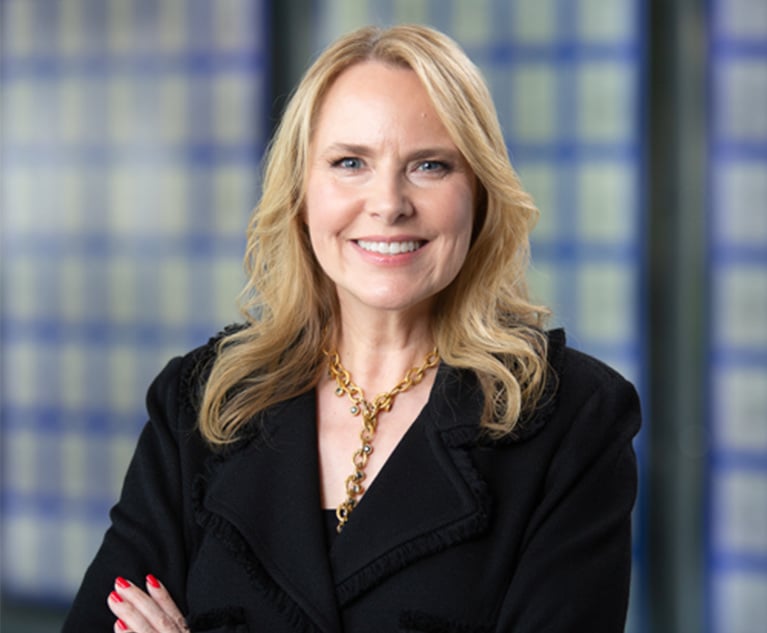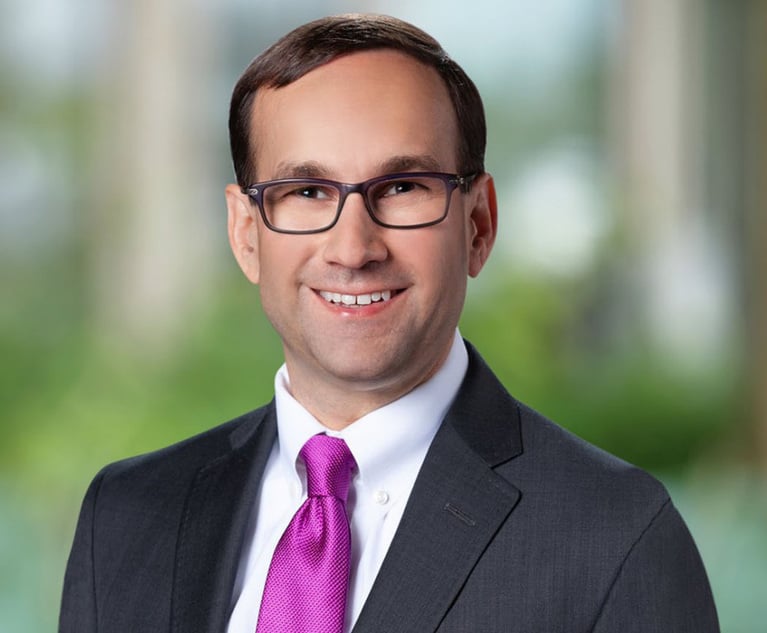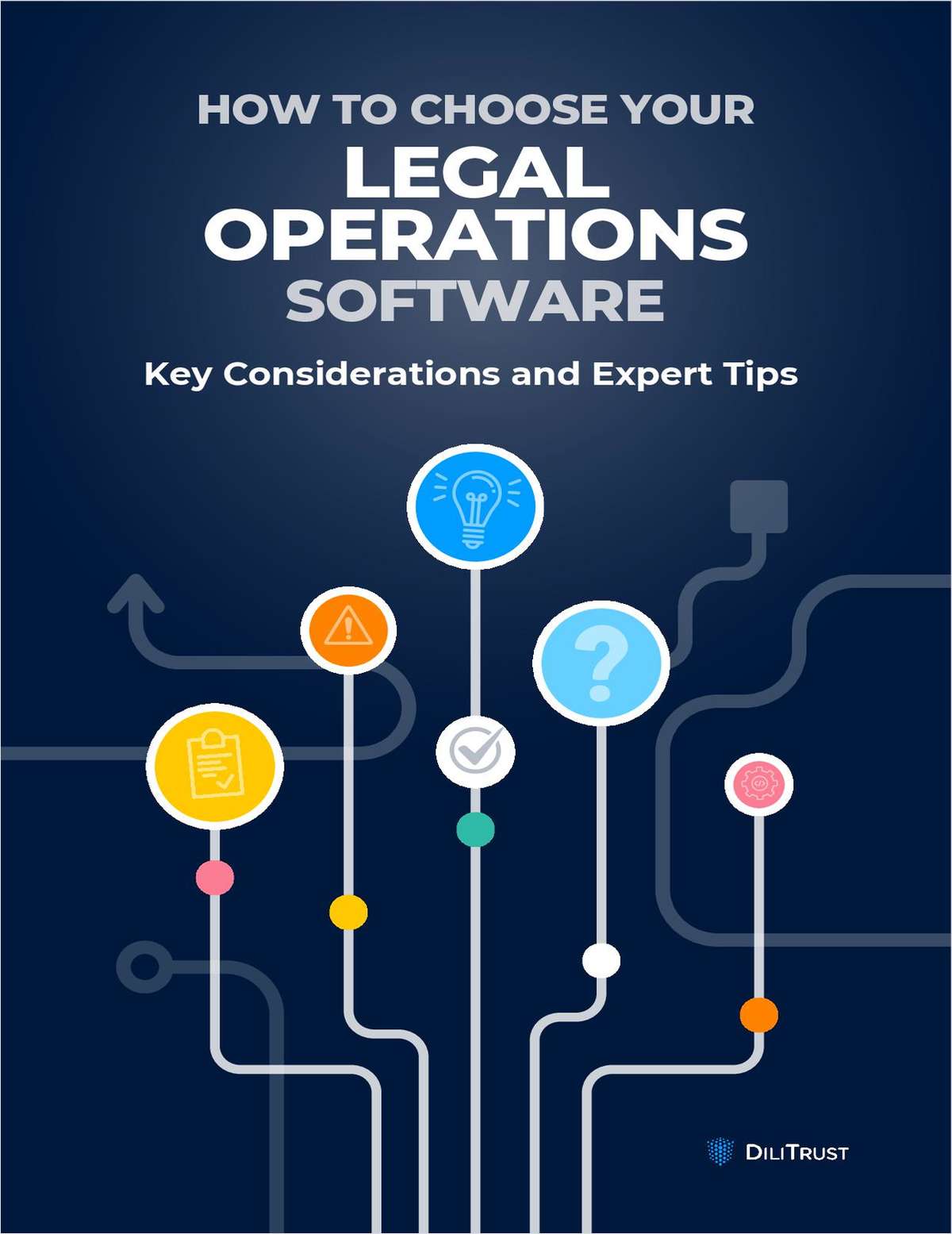 Cate Stetson of Hogan Lovells. (Courtesy photo)
Cate Stetson of Hogan Lovells. (Courtesy photo)Hogan Lovells Partner Cate Stetson Looks Ahead to Milestone of 100 Appellate Arguments
Hogan Lovells' Cate Stetson speaks about how she prepares for oral arguments (spoiler alert: it involves cheeseburgers) and why so few women argue before the U.S. Supreme Court.
March 18, 2020 at 10:03 AM
9 minute read
The original version of this story was published on National Law Journal
When Cate Stetson next argues before the U.S. Court of Appeals for the D.C. Circuit on April 17 (assuming it isn't postponed), she will reach a major personal milestone: 100 oral arguments in federal and state courts across the country.
Stetson is the co-director of Hogan Lovells' Appellate Practice Group and an elected member of the firm's Global Board. She clerked for Judge Stanley Harris of the U.S. District Court for the District of Columbia and Judge David Tatel of the U.S. Court of Appeals for the D.C. Circuit. She joined Hogan in 1997, becoming partner in 2002.
A self-described generalist, Stetson has handled cases ranging from protecting whales to death penalty appeals to the high-profile case of Adnan Syed, of "Serial" podcast fame. In 2018, she argued five cases within 24 days at the Eighth, Eleventh, Seventh and D.C. Circuit courts. "Basically an appellate lawyer's version of the Ironman," she told the National Law Journal.
In this interview, Stetson speaks about her appellate career, how she prepares for arguments (spoiler alert: it involves cheeseburgers), and the perennial question: Why do so few women argue before the Supreme Court?
What was your first appellate argument?
It was on July 31, 2000, before the Ninth Circuit—but in Anchorage, Alaska, where the court of appeals sits once a year. It was a family affair; my husband John traveled with me, because at the time I was six-plus months pregnant with our first daughter, Lucy. The appeal was an environmental case involving cruise ships in Glacier Bay and their impact on whale populations. We represented the National Parks Conservation Association in challenging a significant uptick in the number of cruise ships permitted entry into the Bay. So essentially, I represented the whales. The argument was a blur, but I remember one indelible thing: when I stood up to argue, Lucy gave me a big kick in the side. It was good to know she had my back.
How do you prepare for arguments?
I give myself plenty of time, first off. Time is your friend; epiphanies don't come on command. I reread every brief and every page of the Appendix, taking notes by hand. I print out every cited case and annotate them all, retaining a core set that I will reread many times. I keep a long list of hard questions that occur to me as I prep. I excavate all of the weaknesses in our case, assess them as objectively as possible and try to solve them. I do a lot of walking and talking out loud, formulating answers to those hard questions, which I am sure amuses my colleagues and the people in my neighborhood. Most important, I ask several associates in our exceptional appellate team at Hogan Lovells to moot me. Those moots are often more difficult than the argument itself, which is as it should be.
Do you have a lucky charm or pre-argument ritual? Maureen Mahoney always ate a doughnut before an argument, I believe.
I do have a pre-argument ritual. At first it used to be cheeseburger, a side of fries, and a Diet Coke. Then it became a cheeseburger, a side salad and a Diet Coke. Now it's a cheeseburger with no bun, a side salad and a glass of club soda. As you can see, I am unwilling to relinquish the cheeseburger.
How do you tell clients that they don't have a chance of winning on appeal?
I've never had to tell a client she had no chance of winning on appeal. If a case has been litigated, lost and comes to me, there's nearly always some chance. however small. of turning things around. But I am also not a Pollyanna about challenging odds. I sometimes have to tell clients they have little chance of prevailing on appeal, particularly in one of my main lines of work, complex regulatory cases. Litigating against the federal government is hard to do and even harder to win.
Among your 100 arguments, only two have been at the Supreme Court. Is that of your own choosing? Do you want to argue there more often?
The answers are no and yes. I enjoy my practice immensely. I have become one of a handful of go-to federal appellate lawyers, including handling over 30 D.C. Circuit cases, and I love what I do and where I do it. That said, yes, of course I'd like more Supreme Court opportunities. But Supreme Court regulars are a club of sorts. Most of its members are men, and nearly all of them got their ticket punched in a very few select government offices. I am a woman who grew up in private practice—the virtue of which has been exposure to an array of subject matters and clients, but the downside of which has been a lack of regular Supreme Court at-bats.
A lot has been written about the dearth of female advocates at the Supreme Court level. What are your thoughts about this? Lisa Blatt of Williams & Connolly recently suggested that the "intense verbal jousting" at the Supreme Court does not comport with women, who she says often "come across as less combative than men." Do you agree?
I read Lisa's article with great interest. She is an advocate at the top of her game, and she has found a style that is effective for her. I also fundamentally disagree with her theory. Her theory is that oral argument is combat—it's a fight, and it doesn't involve problem-solving or consensus building, traits identified as more feminine.
I think that's wrong. A court argument isn't combat. If it devolves into a fight, something has gone terribly wrong. An oral argument is an opportunity to persuade. And how do you persuade? You approach an argument with openness and humility. And then you problem-solve and consensus-build. You problem-solve by listening closely, identifying the opportunities within the questions, figuring out what is troubling the judges and helping those judges work through those problems toward the result you're seeking to persuade them of. And you consensus-build by bringing enough judges over to your side—by counting to 2, or 4, or 5, or more, depending on the bench.
That is the style that is effective for me. And I'm pretty sure no judge or adversary has ever found my approach too soft or insufficiently tough.
In my view, the reason women aren't delivering more Supreme Court arguments isn't that they lack sufficient combativeness or confidence. The reason women aren't delivering more Supreme Court arguments is that they are not getting the chance. There is at least one way to move this needle fast: Clients. Clients are paying close attention to diversity now more than ever. But there is more room for them to walk the diversity walk when it comes to selecting their lead appellate advocates. For their big cases, general counsel tend to select lawyers who have argued many other big cases, so that if their case goes sideways, they can comfortably say to their bosses and their boards, "But we hired someone who had [insert large number here] Supreme Court arguments" and no one will question the choice. That mindset needs to shift. Clients, from [the] C-suite on down, need to be willing to call on women to lead at every level—including the Supreme Court. There are appellate lawyers with all sorts of perspectives and backgrounds, many of them women, many of them of color, who may be a terrific fit for a client's case. They just need the shot.
Talk about your pro bono work and why you do it.
Much of my appellate pro bono work involves death row inmates. Last year we won an important Eighth Amendment challenge to conditions on Virginia's death row. We're currently handling a Section 1983 lawsuit against several North Carolina officials whose bad acts sent two intellectually disabled brothers to prison for 30 years before their exoneration. In January, as part of a team of federal public defenders and law-firm lawyers, I argued in the D.C. Circuit a challenge to the federal government's execution protocol. And I have been involved in multiple end-stage litigations for prisoners under execution warrants. I do pro bono work because everyone should. I do this kind of pro bono work because I am especially troubled by situations where momentous and often irreversible results follow from dramatically underresourced lawyering. hat's not fair.
Years ago, I wrote about John Roberts' career as an advocate before becoming chief justice and listed you among his "disciples." What did you learn from Roberts at Hogan and from him now as chief justice?
Among many other things, I learned from the chief justice those problem-solving, consensus-building traits we talked about. He remains the most gifted oral advocate I have ever seen. And what the chief taught me about persuasive writing was equally important. The chief—and Judge David Tatel, the D.C. Circuit judge for whom I clerked—together taught me about writing in an engaging, concise, melodic way; to vary the pace and rhythm of sentences; to edit rigorously; and to be unafraid of employing the occasional unexpected turn of phrase.
I understand you are planning to start up a podcast. What will it be about, and how does it fit in with the rest of your practice?
The podcast is a Hogan Lovells effort; I am simply hosting it. The firm is putting together a podcast series to celebrate our Community Service Department's 50th anniversary, with each episode featuring cases and moments in our long history of pro bono service. I can objectively attest that it's fantastic.
This content has been archived. It is available through our partners, LexisNexis® and Bloomberg Law.
To view this content, please continue to their sites.
Not a Lexis Subscriber?
Subscribe Now
Not a Bloomberg Law Subscriber?
Subscribe Now
NOT FOR REPRINT
© 2024 ALM Global, LLC, All Rights Reserved. Request academic re-use from www.copyright.com. All other uses, submit a request to [email protected]. For more information visit Asset & Logo Licensing.
You Might Like
View All
How Qualcomm’s General Counsel Is Championing Diversity in Innovation
6 minute read
People and Purpose: AbbVie's GC on Leading With Impact and Inspiring Change
7 minute read
Newly Formed DEI Practices Expect Heightened Demand During Trump Administration

Transgender Woman Awarded $150K Default Judgment Against Corrections Officer for Alleged Assault
Law Firms Mentioned
Trending Stories
- 1Judge Denies Sean Combs Third Bail Bid, Citing Community Safety
- 2Republican FTC Commissioner: 'The Time for Rulemaking by the Biden-Harris FTC Is Over'
- 3NY Appellate Panel Cites Student's Disciplinary History While Sending Negligence Claim Against School District to Trial
- 4A Meta DIG and Its Nvidia Implications
- 5Deception or Coercion? California Supreme Court Grants Review in Jailhouse Confession Case
Who Got The Work
Michael G. Bongiorno, Andrew Scott Dulberg and Elizabeth E. Driscoll from Wilmer Cutler Pickering Hale and Dorr have stepped in to represent Symbotic Inc., an A.I.-enabled technology platform that focuses on increasing supply chain efficiency, and other defendants in a pending shareholder derivative lawsuit. The case, filed Oct. 2 in Massachusetts District Court by the Brown Law Firm on behalf of Stephen Austen, accuses certain officers and directors of misleading investors in regard to Symbotic's potential for margin growth by failing to disclose that the company was not equipped to timely deploy its systems or manage expenses through project delays. The case, assigned to U.S. District Judge Nathaniel M. Gorton, is 1:24-cv-12522, Austen v. Cohen et al.
Who Got The Work
Edmund Polubinski and Marie Killmond of Davis Polk & Wardwell have entered appearances for data platform software development company MongoDB and other defendants in a pending shareholder derivative lawsuit. The action, filed Oct. 7 in New York Southern District Court by the Brown Law Firm, accuses the company's directors and/or officers of falsely expressing confidence in the company’s restructuring of its sales incentive plan and downplaying the severity of decreases in its upfront commitments. The case is 1:24-cv-07594, Roy v. Ittycheria et al.
Who Got The Work
Amy O. Bruchs and Kurt F. Ellison of Michael Best & Friedrich have entered appearances for Epic Systems Corp. in a pending employment discrimination lawsuit. The suit was filed Sept. 7 in Wisconsin Western District Court by Levine Eisberner LLC and Siri & Glimstad on behalf of a project manager who claims that he was wrongfully terminated after applying for a religious exemption to the defendant's COVID-19 vaccine mandate. The case, assigned to U.S. Magistrate Judge Anita Marie Boor, is 3:24-cv-00630, Secker, Nathan v. Epic Systems Corporation.
Who Got The Work
David X. Sullivan, Thomas J. Finn and Gregory A. Hall from McCarter & English have entered appearances for Sunrun Installation Services in a pending civil rights lawsuit. The complaint was filed Sept. 4 in Connecticut District Court by attorney Robert M. Berke on behalf of former employee George Edward Steins, who was arrested and charged with employing an unregistered home improvement salesperson. The complaint alleges that had Sunrun informed the Connecticut Department of Consumer Protection that the plaintiff's employment had ended in 2017 and that he no longer held Sunrun's home improvement contractor license, he would not have been hit with charges, which were dismissed in May 2024. The case, assigned to U.S. District Judge Jeffrey A. Meyer, is 3:24-cv-01423, Steins v. Sunrun, Inc. et al.
Who Got The Work
Greenberg Traurig shareholder Joshua L. Raskin has entered an appearance for boohoo.com UK Ltd. in a pending patent infringement lawsuit. The suit, filed Sept. 3 in Texas Eastern District Court by Rozier Hardt McDonough on behalf of Alto Dynamics, asserts five patents related to an online shopping platform. The case, assigned to U.S. District Judge Rodney Gilstrap, is 2:24-cv-00719, Alto Dynamics, LLC v. boohoo.com UK Limited.
Featured Firms
Law Offices of Gary Martin Hays & Associates, P.C.
(470) 294-1674
Law Offices of Mark E. Salomone
(857) 444-6468
Smith & Hassler
(713) 739-1250








